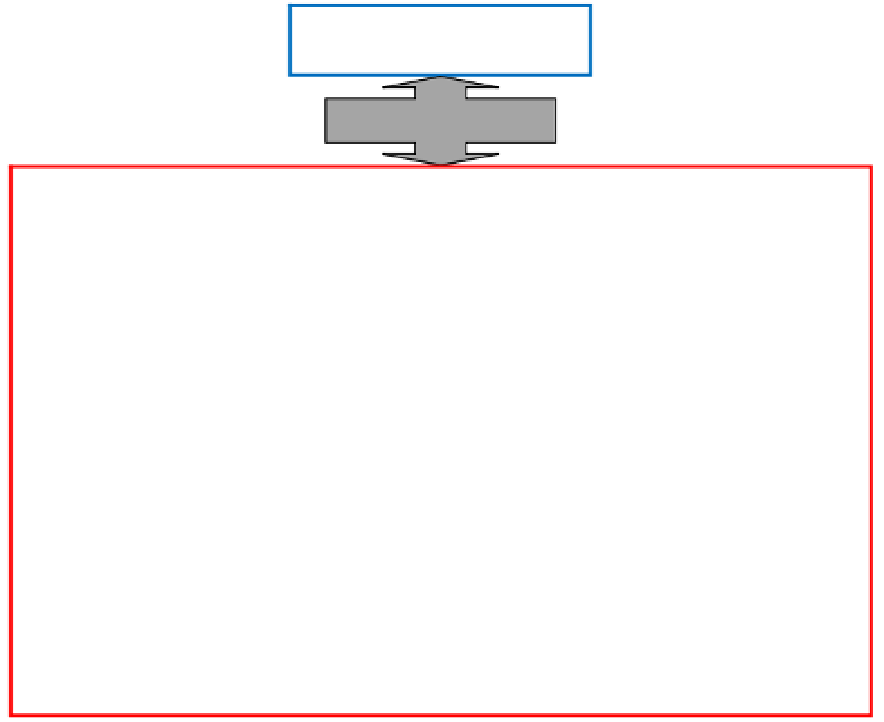Image Processing Reference
In-Depth Information
frequency domain. The frequency range of its real, Re
X
(
k
), and imaginary part, Im
X
(
k
),
comprises both positive and negative frequencies simultaneously. Since the considered time
domain signal is real, Re
X
(
k
) is even (the spectral values
A
and
B
have the same sign), while
the imaginary part Im
X
(
k
) is odd (
C
is negative,
D
is positive).
The amplitude of each of the four spectral peaks is
M
/2, which is half the amplitude of the
time domain signal. The single frequency interval under consideration [-¼ω
s
÷¼ω
s
]
([-0.5÷0.5] when normalized frequency is used) is symmetric with respect to a frequency of
zero. The real frequency spectrum Re
X
(
k
) is used to reconstruct a cosine time domain
signal, whilst the imaginary spectrum Im
X
(
k
) results in a negative sine wave, both with
amplitude
M
in accordance with the complex analysis equation (Table 1). In a way
analogous to the example shown in Fig. 7, a complex frequency spectrum can also be
derived.
Real time domain signal
of frequency ω
0
Forward
complex
DFT
Complex spectrum
Imaginary part
of complex spectrum Im X(k)
Real part
of complex spectrum Re X(k)
A
B
D
M
/2
M
/2
M
/2
-ω
0
-ω
s
/4
-ω
0
0
ω
0
ω
s
/4
-ω
s
/4
0
ω
0
ω
s
/4
M
/2
C
M
M
M
M
B
cos
n
sin
n
D
sin
n
cos
n
0
0
0
0
2
2
2
2
M
M
M
M
A
cos
n
sin
n
C
sin
n
cos
n
0
0
0
0
2
2
2
2
X
(
k
)
M
cos
n
X
(
k
)
M
sin
n
R
0
I
0
Fig. 7. Inverse
complex
DFT - reconstruction of a real time domain signal
Why is
complex
DFT used since it involves intricate complex number math?
Complex
DFT has persuasive advantages over
real
DFT and is considered to be the more
comprehensive version.
Real
DFT is mathematically simpler and offers practical solutions to
real world problems; by extension, negative frequencies are disregarded. Negative
frequencies are always encountered in conjunction with complex numbers.




























